The Scarif Sunrise. Drunk by Xianna in Episode 3. Fun, fruity, and the bane of our existence. In the episode Laura described this drink as green on the bottom, orange in the middle, and red on top. Most of this drink was pretty easy to figure out. Orange juice and tequila would make up the orange, and melon liqueur would become the green.
Month: March 2018
The Falling Star first appeared in Prologue 1 when Felton Mox orders one for Karma. It’s clear, very strong, and served with a cherry. Our version of the drink features pisco (a type of brandy made in Peru and Chile) with dry vermouth and bitters for depth, a bit of simple syrup to cut the bitterness, and, of course, a cherry. This drink is strong and definitely made for sipping.
Trivia Time: the name “Falling Star” also shows up in Prologue 2, but it’s given the same description as the Sparkling Star. We’re not saying our wonderful game master and Tabletop Leader made a mistake, but… wait… yes we are.
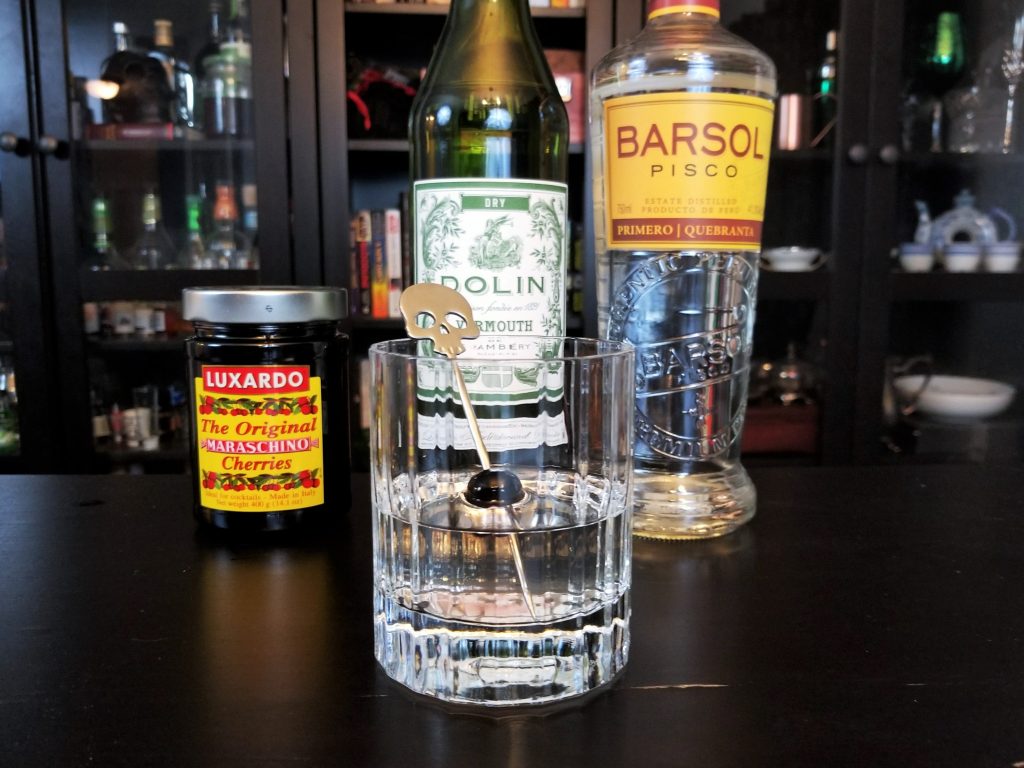
While they’re much more expensive than grocery store ‘maraschino’ cherries, we highly recommend grabbing a jar of Luxardo brand maraschinos. The difference between the two is night and day. The Luxardo cherries are slightly sour, not as cloyingly sweet, and taste like real cherries.
Falling Star [serves 1]
2 ounces Pisco
1 ounce dry vermouth
1/2 ounce simple syrup
Dash of orange bitters
Garnish: Luxardo maraschino cherry
Shake well over ice. Serve in a rocks glass. Garnish.
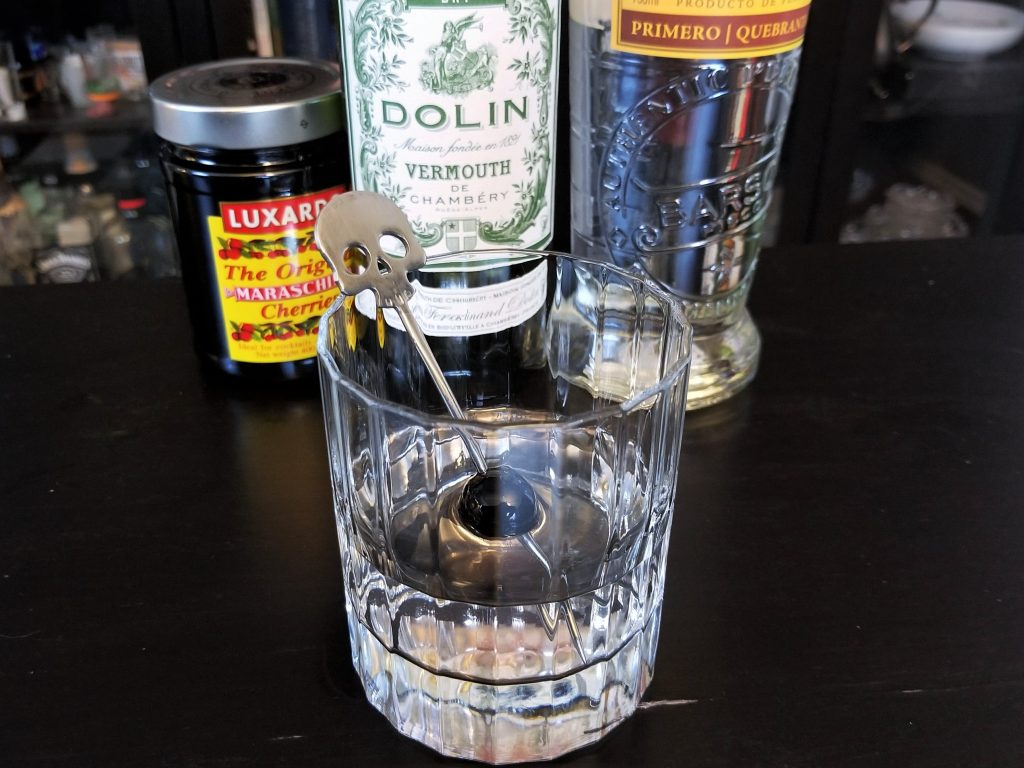
The Sparkling Star first appears in Prologue 1 when Karma orders it. The drink was described as complicated and using a number of shakers, and we accepted that challenge. After some searching we stumbled upon the magical butterfly pea flower. When brewed in water like a tea it is a rich blue color, but when it becomes exposed to acidic liquid it turns a brilliant magenta. We decided on a lemon based drink to get the acidity and even threw edible glitter in there for some extra “oomph”.
This drink is tart, refreshing, and guaranteed to impress your friends.
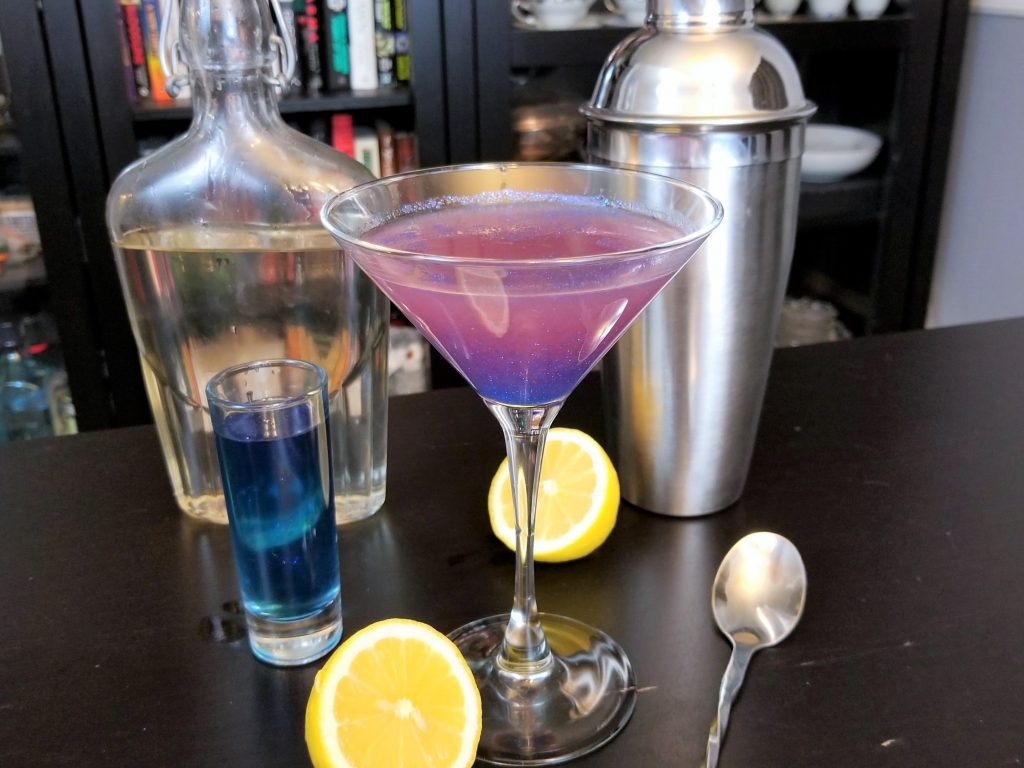
The Sparkling Star is served out of two containers. One container will have the pale yellow lemon mix. The second container will have the butterfly pea flower mixture. This container should be clear to show off the beautiful blue color of the butterfly pea flower liquid.
We found this neat “vinegar and oil” container to use for serving. It definitely isn’t necessary, but it does look cool.
Sparkling Star [serves 1]
1/4 ounce butterfly pea flower concentrate (recipe below)
1-1/2 ounces vodka
1/2 teaspoon blue luster powder or other edible glitter
1/2 ounce St. Germain
3/4 ounce simple syrup
2 ounces fresh lemon juice
In a clear shaker or shot glass combine the butterfly pea flower concentrate, vodka, and the luster powder. Stir well and set aside. In another shaker add the St. Germaine, simple syrup, lemon juice, and ice and shake well. Pour the vodka lemon drink into a martini glass. Carefully pour in the butterfly pea mix.
Butterfly Pea Flower Concentrate
2 cups water
1/2 cup dried butterfly pea flowers (about 1/4 ounce)
Boil water. Combine the water and flowers in a heat-proof container and let steep for 10 minutes. Strain through a fine mesh sieve, discarding the solids.
Mocktail Version
This cocktail is easily converted into a non-alcoholic drink. Replace the vodka with water, and the St. Germain with lime juice. We used the mocktail version in the cool, bubble-container pour video.
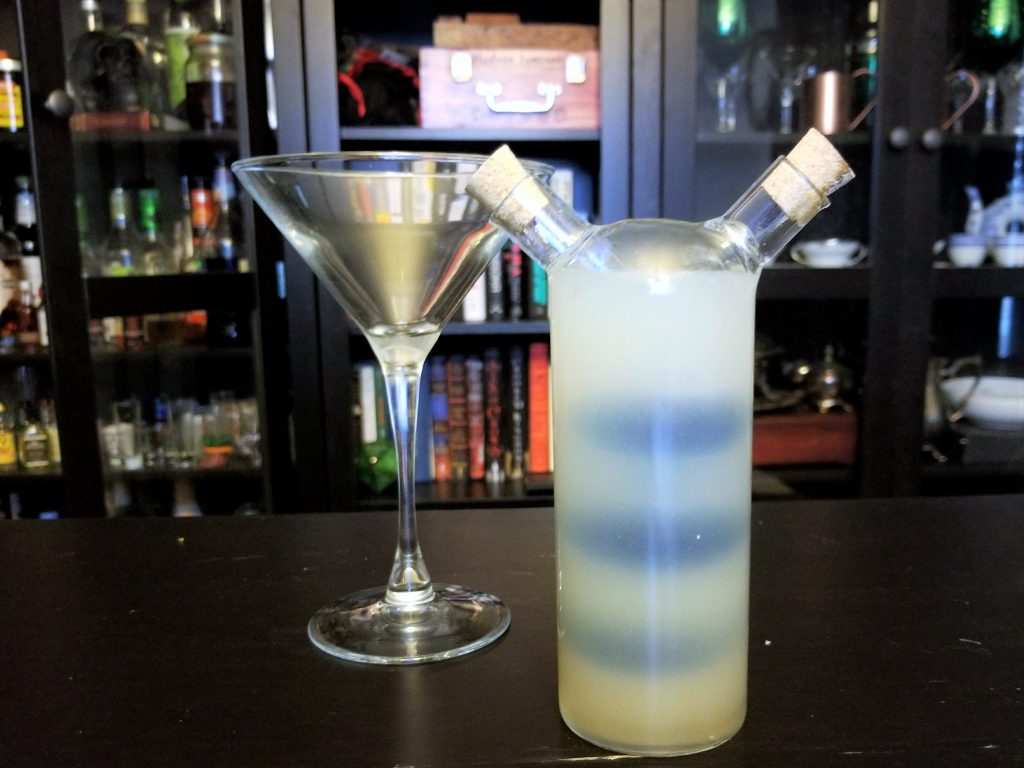
Simple syrups are a quick and easy way to add sweetness to cocktails. Regular, granulated sugar doesn’t dissolve well in cold liquid, and more often than not you’ll end up with a grainy drink. By creating a pre-dissolved sugar syrup you can add sugar to your cocktail without worry.
The following are basic syrups that will appear in multiple of our recipes. They are easy to halve or double.
Keep these syrups in airtight containers and in the refrigerator. They will last at least a month.
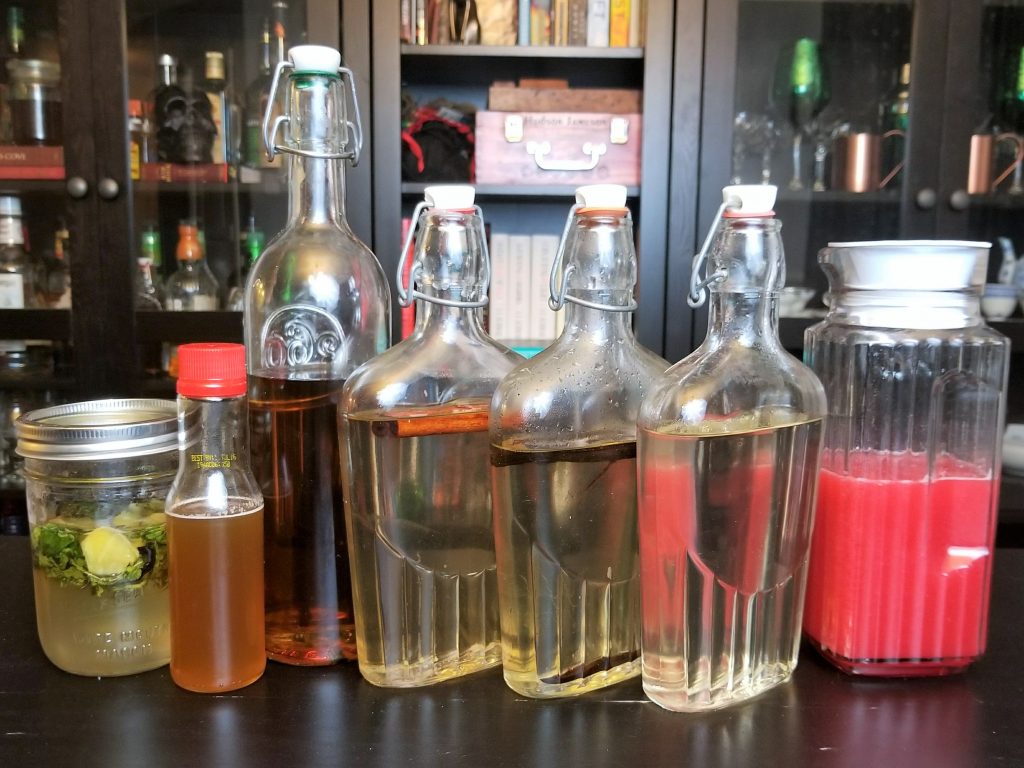
You can see our current collection of syrups. From left to right: Ginger Mint, Honey, Demerara, Cinnamon, Vanilla, Simple, Raspberry.
Simple Syrup
1 cup water
2 cups sugar
Add water to a saucepan over high heat and bring to a boil. Add the sugar and stir until fully dissolved, about 1 minute. Remove from the heat and let cool completely.
Cinnamon Simple Syrup
1 cup water
2 cups sugar
2 cinnamon sticks
Add water to a saucepan over high heat and bring to a boil. Add the sugar and cinnamon sticks, and stir until fully dissolved, about 1 minute. Remove from the heat. Let sit for 12 hours. Strain before using.
Vanilla Simple Syrup
1 cup water
2 cups sugar
1 vanilla bean pod
Add water to a saucepan over high heat and bring to a boil. Add the sugar and stir until fully dissolved, about 1 minute. Remove from the heat. Split the vanilla bean pod lengthwise and scrape out the seeds. Add the seeds and the pod to the syrup. Let sit for 12 hours. Strain before using.
Before we get started we want to cover a few of the basics of equipment: shakers, measuring, glasses, and a few others.
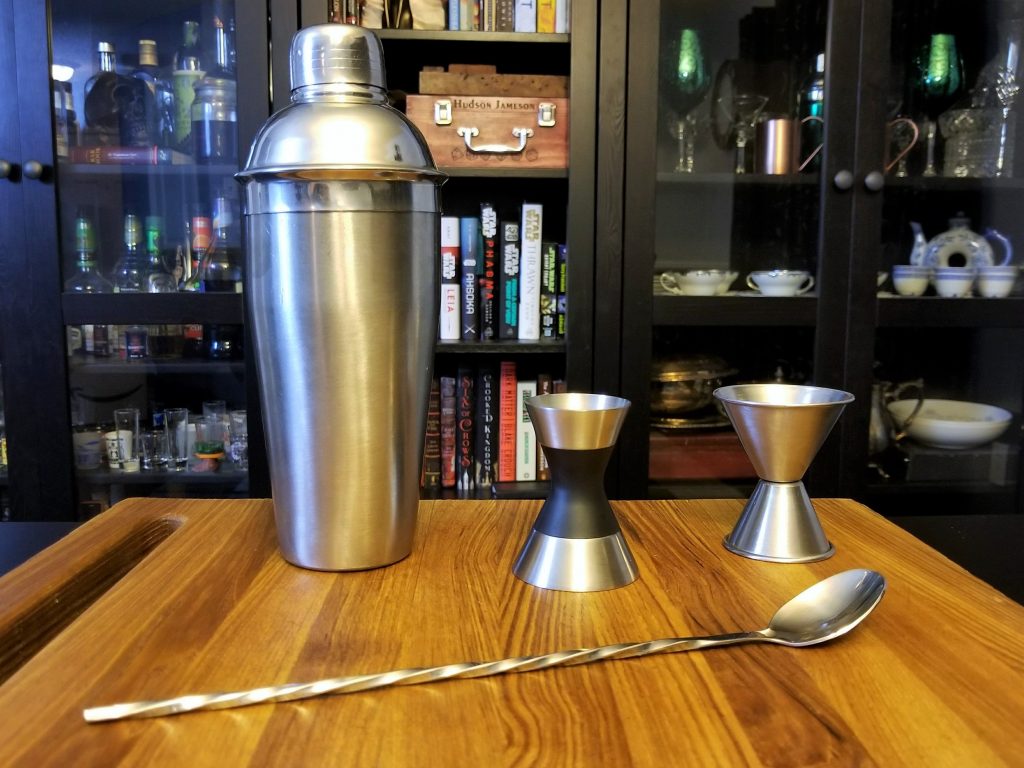
Seen here: Cobbler shaker, 2 different jiggers, bar spoon
Shakers
There are a few different ways to shake up your cocktails. The two most common types of shakers are the Cobbler and the Boston Shaker.
Cobblers consist of a base tin, a straining top, and a small cap. They are easy to find and easy to use. However, the built in strainers usually have small holes that can making straining slow, especially if the drink has chunks (such as the mint in a mojito). We have cobbler shakers for their ease of use.
A Boston shaker is has only two pieces, a base tin and a glass. The glass is wedged into the tin to create a cap before shaking. These are also easy to find, and they are easier to clean than the cobbler. The cons? They can take some getting use to; making sure the two pieces are properly wedged together before shaking takes some practice. Straining anything smaller than small ice cubes will require a strainer. For the less agile out there, the glass part of the shaker is easy to break, being glass. However, it’s becoming increasingly easy to find Boston shakers where both pieces are made of metal.
Measuring
The most common measuring device for cocktails is the jigger. It consists of two metal cones attached at the points. The two sides are usually of different measurements, most often a 1 ounce and a 2 ounce. They are easy to use and easy to clean, but it can create clutter to buy multiple ones to get all the measurements you might need. This is why we recommend getting a jigger with measurement lines on the inside. OXO makes a great one with 1/4 ounce, 1/3 ounce, 1/2 ounce, 3/4 ounce, 1 ounce, and 1 1/2 ounce lines.
Regular, Imperial measuring cups and spoons can also be used. Most Americans already have them in their house, and they are quite cheap. However, they can be difficult to use for cocktails. The small amounts usually found in cocktails can be hard to measure in measuring cups, and using spoons requires calculating how many ounces they hold.
If you are using Imperial measuring cups/spoons use the following:
1 cup = 8 ounces
2 tablespoons = 1 ounce
1 tablespoon = 1/2 ounce
1 1/2 teaspoons = 1/4 ounce
Another option is the kitchen scale. While not common in America, they are easily found in places that use the metric system (so… everywhere else). If your scale does not have an Imperial option, you can easily find ounce-to-gram or ounce-to-ml conversion charts on the internet. We recommend measuring ingredients in separate containers before adding to your shaker. It’s very easy to over pour, especially with small measurements. If you accidentally add too much of an ingredient to the shaker with everything else already in it, there’s not much you can do. But if you pour too much into a small container with nothing else it’s easy to pour some of that ingredient back into its original container.
Bar Spoons
Bar spoons while not necessary, are quite useful. They have long, thin handles that make them perfect for stirring a large range of containers. You’ll notice that many bar spoons have twisted handles. This helps them glide past ice cubes.
Glasses
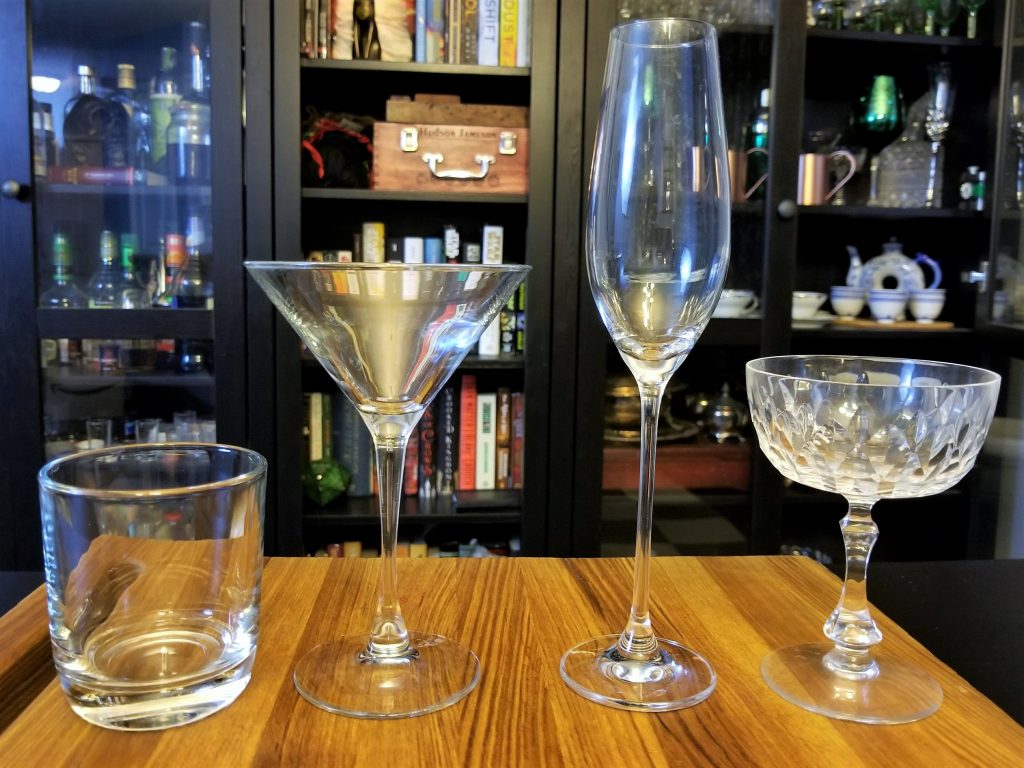
Seen Here: rocks glass, martini glass, champagne flute, champagne coupe
Rocks Glasses: These glasses usually hold 6 and 8 ounces of liquid, but you will usually only see them filled half way. A rocks glass is typically used for strong drinks with either a few ice cubes, an ice sphere, or no ice at all.
Common drinks: Old Fashioneds, Sazeracs, Negronis
Martini Glasses: Most martini glasses hold between 4 and 6 ounces of liquid. The stem of the glass allows you to hold the glass without heating up the drink. This is useful since the martini glass is commonly used for cold drinks that are not being served with ice.
Common drinks: Martinis, Sidecars, Manhattans
Champagne Flute: Typically 8 ounces. Much like the martini glass, the tall stem of the champagne flute prevents your hands from warming up your drink. The thin, tapered shape of the glass helps prevent too many bubbles from being created and escaping too soon.
Common Drinks: Champagne, French 75
Champagne Coupe: The coupe glass usually holds 4 to 6 ounces. Despite its name, the Champagne coupe is a sub-par glass for champagne. The wide, open shape means too many nucleation sites and therefore too many bubbles that are then lost. Much like the martini glass, they are most often used for cold drinks that are not served over ice.
Common Drinks: Clover Clubs, Pisco Sour
Martini Vs. Coupe: You might have noticed that the martini glass and the coupe glass are nearly identical. So how do you know which drinks go in each one? Short answer: you don’t. Outside of a few drinks they’re pretty interchangeable, and it comes down to personal preference. We prefer to serve drinks with froth in the coupe glass, and clear drinks in the martini glass. We just think the coupe glass lets you see the layers in a frothy drink better.
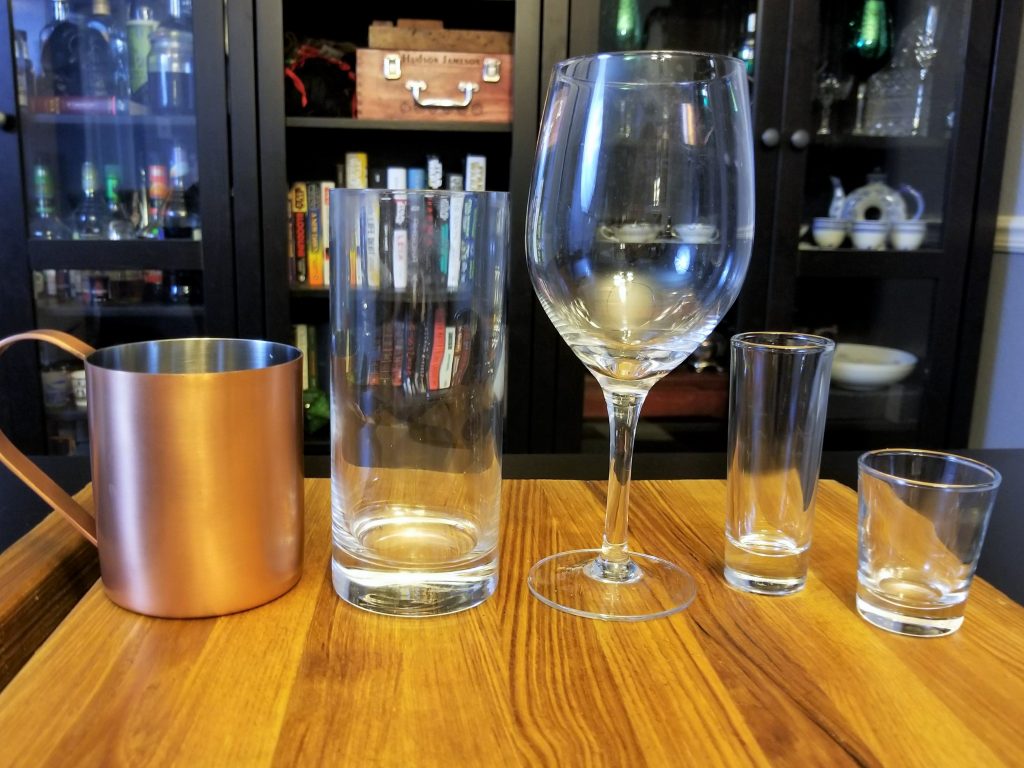
Seen Here: copper mug, highball, wine glass, shot glasses
Copper Mug: Around 16 ounces, these mugs are not solid copper. They are nickel or stainless steal with a copper coating on the outside only. The copper mug is the traditional serving vessel of the Moscow mule. Why? I don’t know. But it’s tradition! There really is no other reason than tradition and aesthetics for serving a Moscow mule in a copper mug. If you don’t have them, or don’t wish to buy them, you can use a highball.
Common Drinks: Moscow Mules
Highball: These straight up-and-down glasses are between 12 and 16 ounces. They are most commonly used for drinks served over ice, often with carbonated components.
Common Drinks: Gin Fizz, Gin and Tonic
Wine Glass: Anywhere from 10 to 25 ounces these glasses are used for, you guessed it, wine. There is a huge variation in size in wine glasses, which specific types for different varieties. Like other stemmed glasses we’ve covered, the stem prevents the wine from warming up too quickly.
Common Drinks: Wine, Wine Spritzers
Shot Glasses: Shot glasses are 1 to 3 ounces and almost exclusively used for taking shots.
Common Drinks: Shots
Others
Blenders are great for frozen, blended drinks and making fruit purees. We recommend getting the highest quality blender you can; cheap blenders will often leave large chunks of ice that stick around no matter how long you run the blender for.
Cocktail picks make small garnishes like olives and cherries easy to take out of the drink.
Tiki accouterments: tiki glasses, paper umbrellas, and colorful straws can add fun flair to tropical drinks, but are not necessary. Tiki drinks can be poured into regular highball glasses.
We’ve embarked on a new endeavor: recipes. Each recording session we found ourselves inventing drinks and foods, and discussing what we thought they tasted like. This led to the idea of making these items in real life and sharing them with you.
After today, recipes will go up on non-episode Thursdays. You can find them under the new “Recipes” menu tab. Today we went ahead and posted a few “starter” items. There’s a cocktail equipment basics post to help you get acquainted with things, some simple syrup recipes to sweeten your drinks, and the first drink we invented, “the sparkling star”.
We hope you enjoy this little side quest of ours!
Laura, Tabletop One
Tabletop Squadron
Recent Posts
Archives
- August 2023
- March 2022
- December 2021
- November 2021
- September 2021
- August 2021
- July 2021
- May 2021
- April 2021
- February 2021
- November 2020
- October 2020
- August 2020
- July 2020
- June 2020
- May 2020
- April 2020
- February 2020
- January 2020
- November 2019
- September 2019
- August 2019
- July 2019
- June 2019
- May 2019
- April 2019
- March 2019
- February 2019
- January 2019
- October 2018
- September 2018
- July 2018
- June 2018
- May 2018
- April 2018
- March 2018
- January 2018
- December 2017
Categories
Search
Categories
Archives
- August 2023
- March 2022
- December 2021
- November 2021
- September 2021
- August 2021
- July 2021
- May 2021
- April 2021
- February 2021
- November 2020
- October 2020
- August 2020
- July 2020
- June 2020
- May 2020
- April 2020
- February 2020
- January 2020
- November 2019
- September 2019
- August 2019
- July 2019
- June 2019
- May 2019
- April 2019
- March 2019
- February 2019
- January 2019
- October 2018
- September 2018
- July 2018
- June 2018
- May 2018
- April 2018
- March 2018
- January 2018
- December 2017

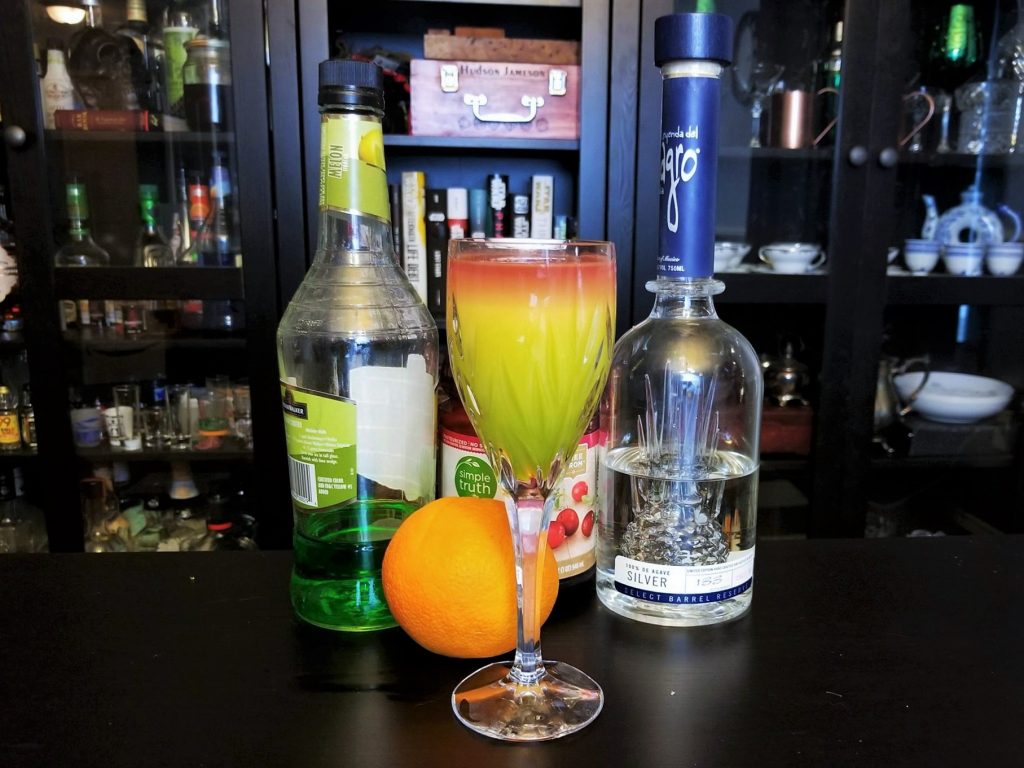
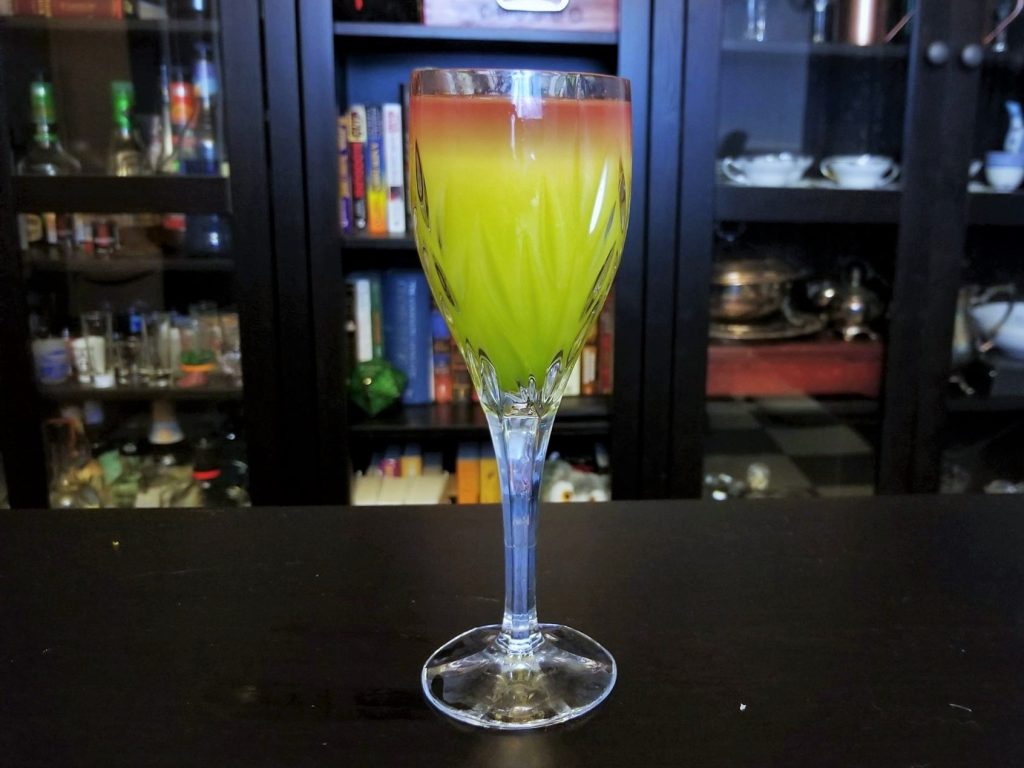
Recent Comments